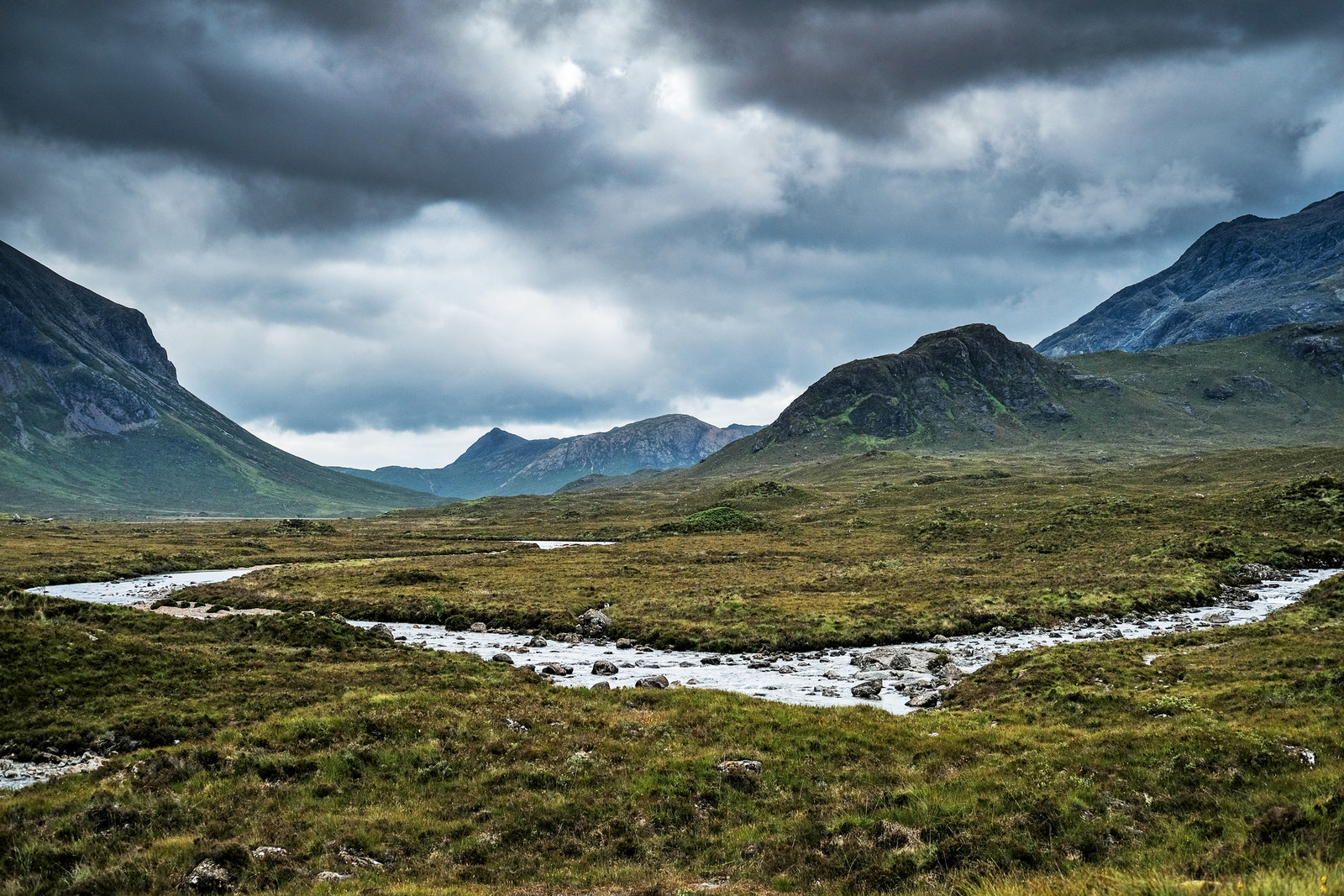Dr Caroline Gould is waiting in the car park when BuzzFeed News arrives to meet her, at a cafe near the picture-postcard town of Portree on the Isle of Skye. She sits upright in her large wheelchair, wearing a striking sweatshirt that says: “My joints go out more often than I do.” When she turns around, you see that the message continues on her back “...but my mind and will are as strong as my joints are weak.” After speaking to her for even a short time, it becomes clear that’s the case.
Gould, 58, has a severe form of Ehlers-Danlos syndrome, a degenerative connective tissue disorder that leads to a lack of collagen in the body, causing joints to dislocate easily. It also affects internal organs, including the heart. She uses a large mobility vehicle with a built-in lift to travel around the rugged island. Without it, she wouldn’t have managed to make the half-hour journey from her home in the small village of Broadford to meet us here today.
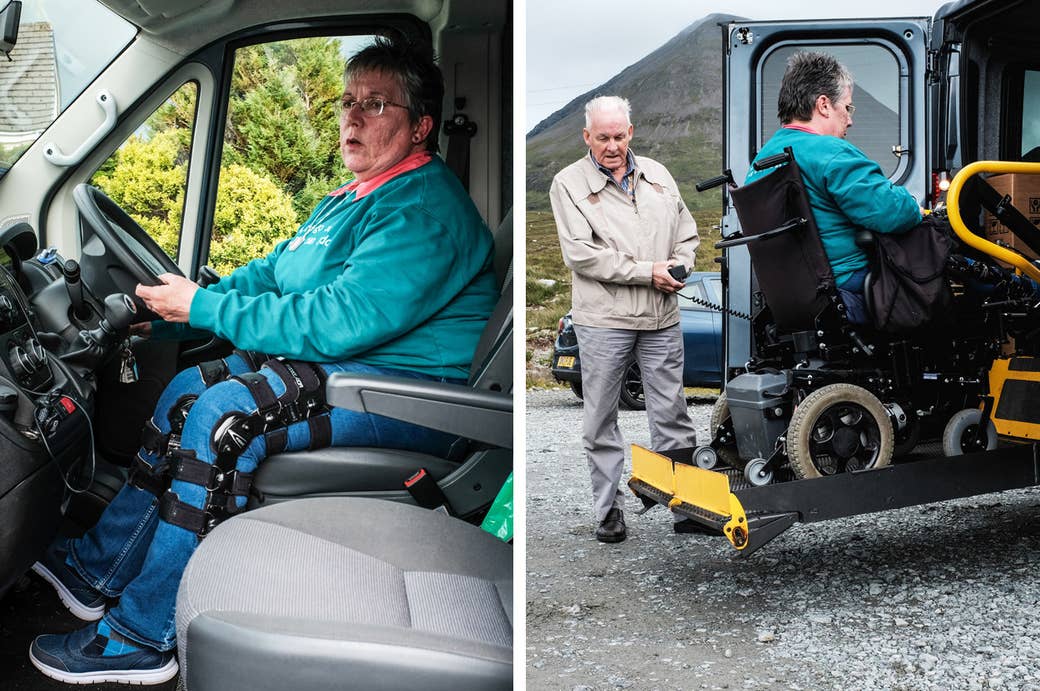
Skye is a large, remote, and beautiful island off the northwest coast of Scotland. Its (mainly single-track) roads take winding detours around its many undulating sea lochs, which cut deep channels across the landscape. It makes for a stunning and popular holiday destination, but the narrow roads, traffic problems, and mountainous terrain make journeys quite difficult, particularly for people with limited mobility.
Gould’s big, square vehicle resembles a high-sided black van and is empty apart from a seat for the driver and a slim row of seats for passengers. It's equipped with a lift at the back, which she needs some help to operate. Once her wheelchair is raised on the lift, she uses the extra space inside the van to turn around in the van and transfer to the driver’s seat. All of the controls are hand-operated. Today, she’s travelling with James Greer, a 73-year-old ex-firefighter who, like Gould, is a member of the Skye & Lochalsh Access Panel, a group that carries out disabled access audits for businesses, as well as working with other bodies to push for improvements in disabled access across Skye.
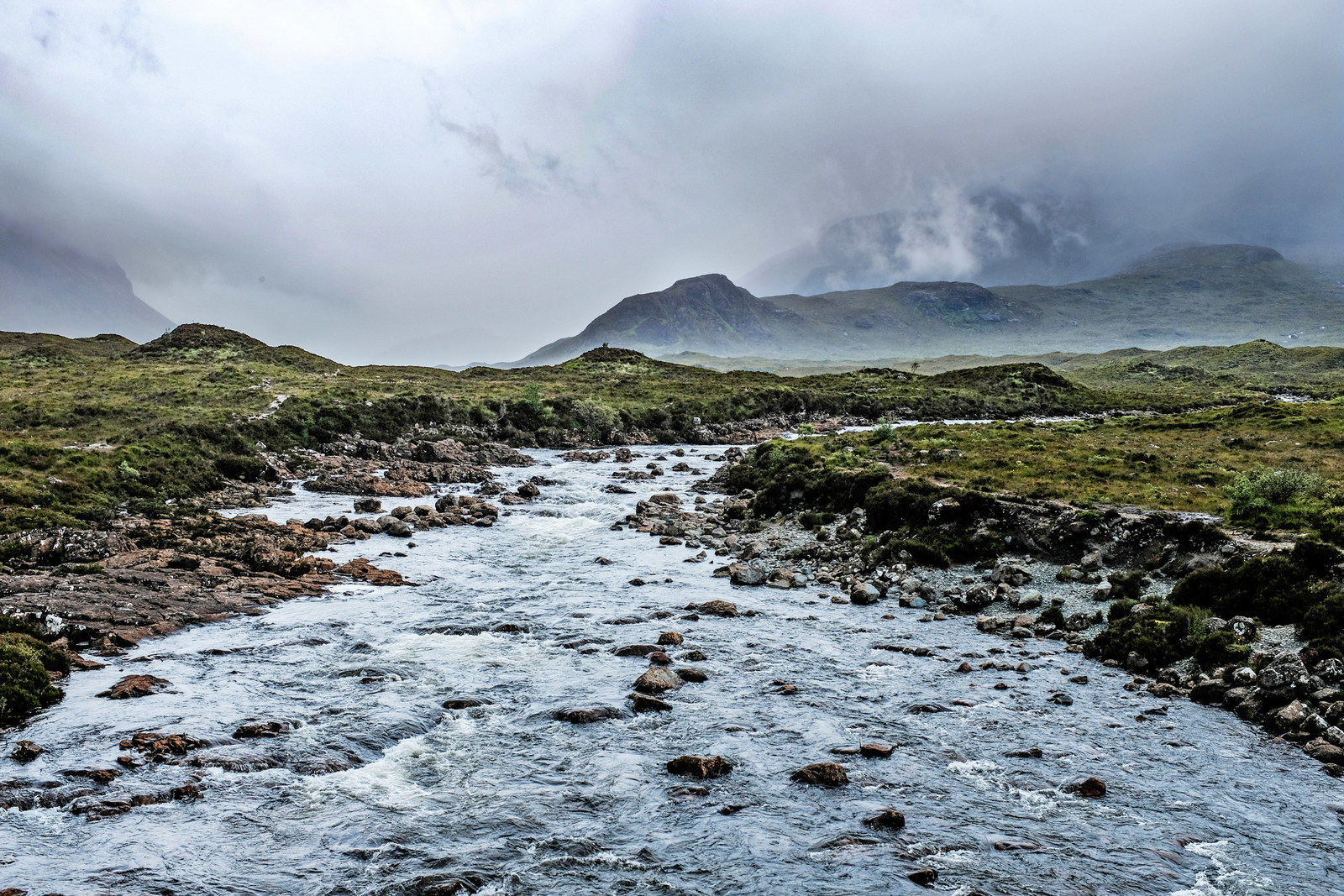
We travel with Gould as she drives for 30 minutes through the mountainous landscape towards her home. Along the way we pass mist-shrouded peaks, ancient bridges, and a huge waterfall that cascades in full spate with the spray almost splashing the van. The road takes sharp twists and turns, heading deep into a valley one second, before turning again to run alongside an almost vertical cliff face. We're frequently held up by slow-moving camper vans filled with tourists who lean out of windows to goggle at the vast mountains and rushing streams.
When we chat about transport challenges Skye can present, Gould is philosophical. “It’s an ongoing problem,” she says over a coffee, pausing politely to turn down the offer of a scone to go with her double espresso, “but to a large extent it’s the price you pay for living in such a unique place; it’s the second-most popular destination in Scotland after Edinburgh, and deservedly so. I first came to Skye as a young geology student. When I arrived, the mist was down, I was tired, and I was sure I was going to hate this place. But just 24 hours later I was saying to people I was going to move here, and I did. I loved it. I still do, but since starting to use the wheelchair things have been very challenging.”
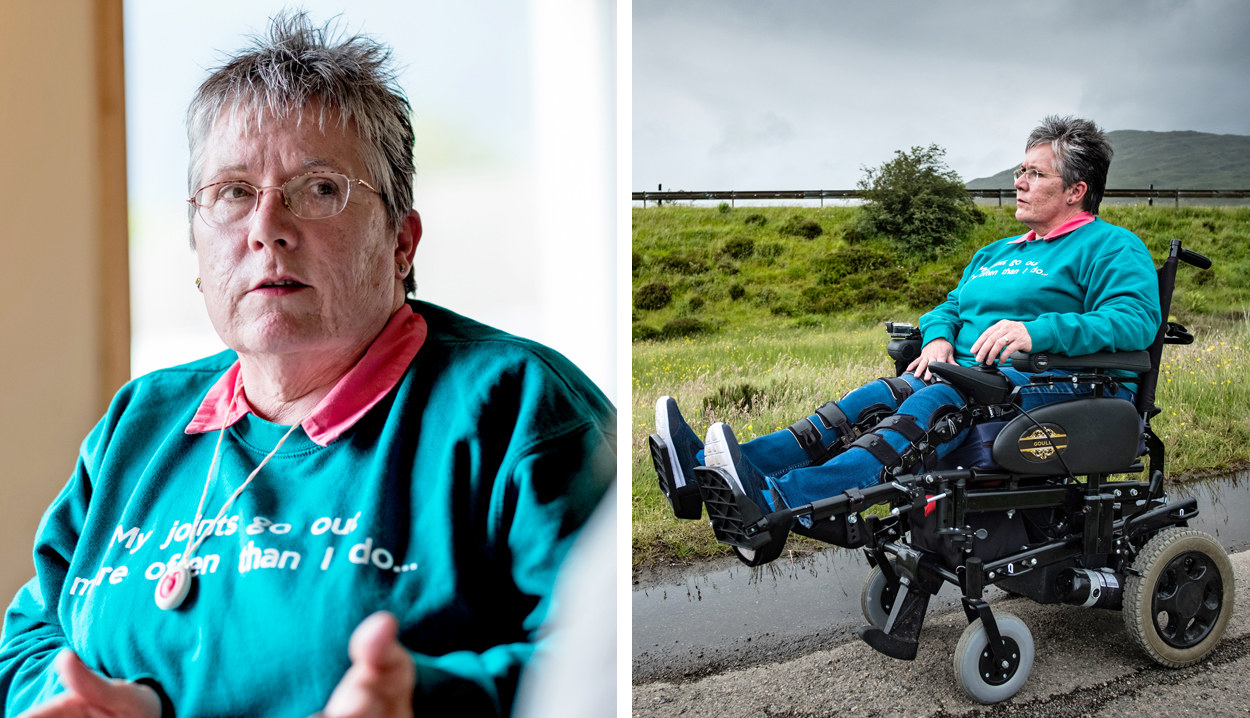
She pauses to gather her thoughts, then continues: “The way I tend to put it is that my world closed down when I started to use the wheelchair. The first time I visited a supermarket in a chair an acquaintance came over to me and spoke over my head to my husband, saying ‘Why is Caroline in a wheelchair?’ He said: ‘Why don’t you ask her yourself? There’s nothing wrong with her hearing.’ I have a second T-shirt that says ‘Wheelchair use does not affect hearing or intellect.’ If I’m having a bad week I tend to wear it, because it’s the only way I can silently get my point across.”
During the 2011 census, 19.2% of the Lochaber and Skye population reported a long-term illness or health problem that limited their day-to-day activities. And for people with health and mobility problems, island life is by no means straightforward.

“If I go anywhere I have to organise it with military precision,” says Gould. “And it can be costly as well. For example, my local swimming pool in Broadford doesn’t have an accessible changing room. I’ve gone back and forth to them so many times that they’ve actually now stopped responding to my emails and calls. So if I want to go swimming I have to go to Portree, a 52-mile round trip. The whole process takes me five hours in total, sometimes more depending on the seasonal traffic, with just one hour spent swimming. I also have to hire a carer to go with me at a cost of £16 an hour.”
Statistics from the International Passenger Survey indicate that visits to Skye have increased over the last few years. Greer confirms that large tour buses and camper vans clog the island’s single-track roads, causing additional problems for disabled locals. As well as causing congestion, visitors also tend to park across dropped kerbs, which are vital for wheelchair users trying to cross the road. Blocking these access points can turn a simple journey into a logistical nightmare.
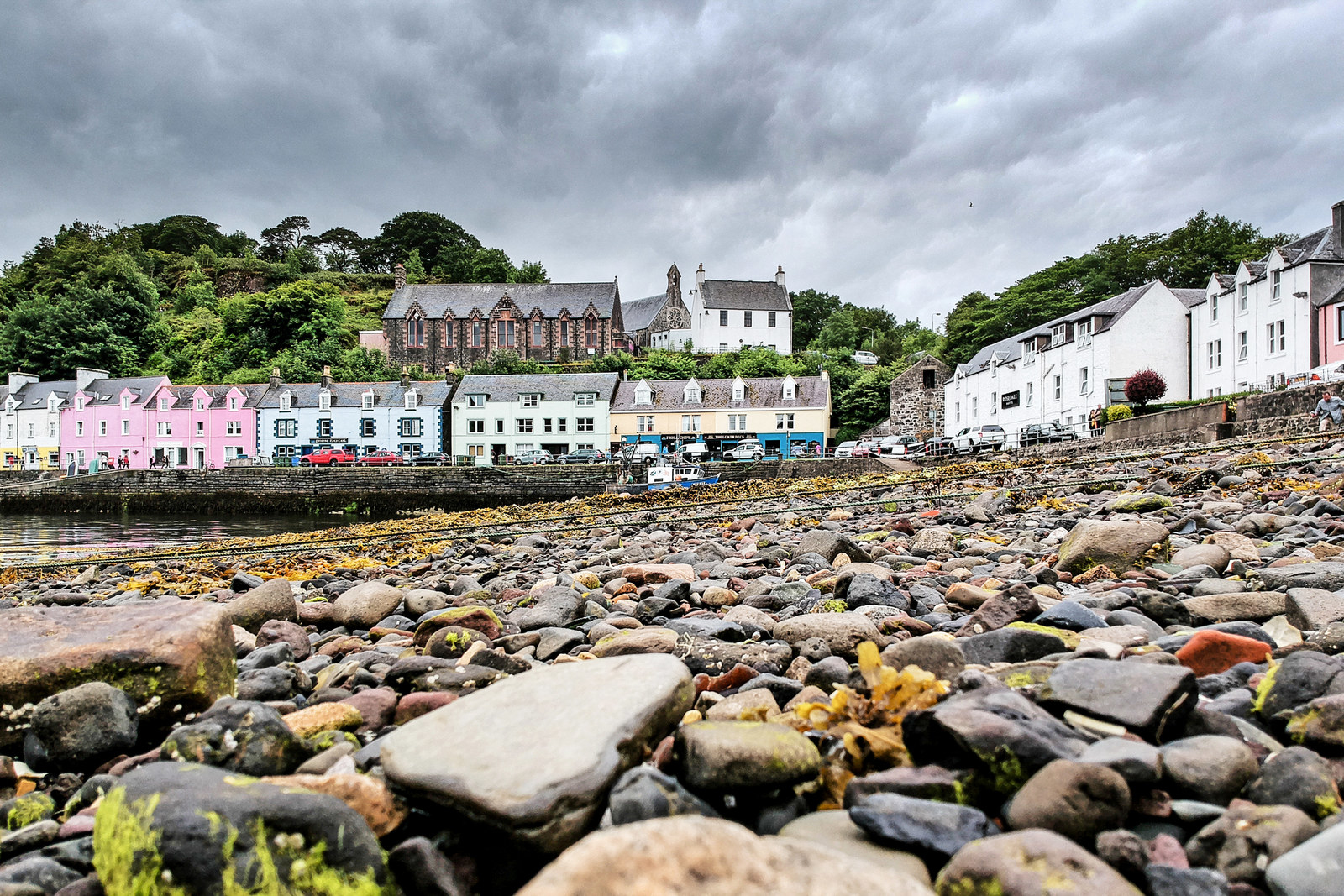
Gould explains: “If I’m visiting the health centre, shops, or library I have to set off at least an hour before I have to be there. There aren’t many dropped kerbs in the village and they’re in places where people tend to park across them. Large lorries also pull over and park on the pavement, so I can’t get past. I have to phone other people I know in the village to ask if they can help me figure out a way to get to where I’m going. Sometimes before I cross a road I have to phone a neighbour, ask them to come out of their property, and confirm I’ll be able to get back on to the pavement on the other side.”
Gould’s tone is calm, but her frustration comes to the fore when she describes times she’s experienced completely unnecessary barriers, or encountered people who seem either unable or unwilling to understand or adapt to her needs.
She shakes her head slightly. “I ask people, ‘Do you really think you’re going to get through life without ever suffering from a disability?’ No one ever thinks that they may end up becoming disabled. I certainly didn’t think it would ever happen to me, but why should it stop me? I still have the same dreams and aspirations as anyone else.”
Beside her, Greer nods sympathetically. “I’ve always been fit. Thirty years ago I was a firefighter in Glasgow – I used to be able to run up and down four flights of tenement stairs in a full fire kit. Then I worked in a centre for the elderly. I even did a course on wheelchairs there! I never thought I’d be disabled. Cutting the hedge used to take me 30 minutes, now it takes me over two hours. It’s been a big change.”
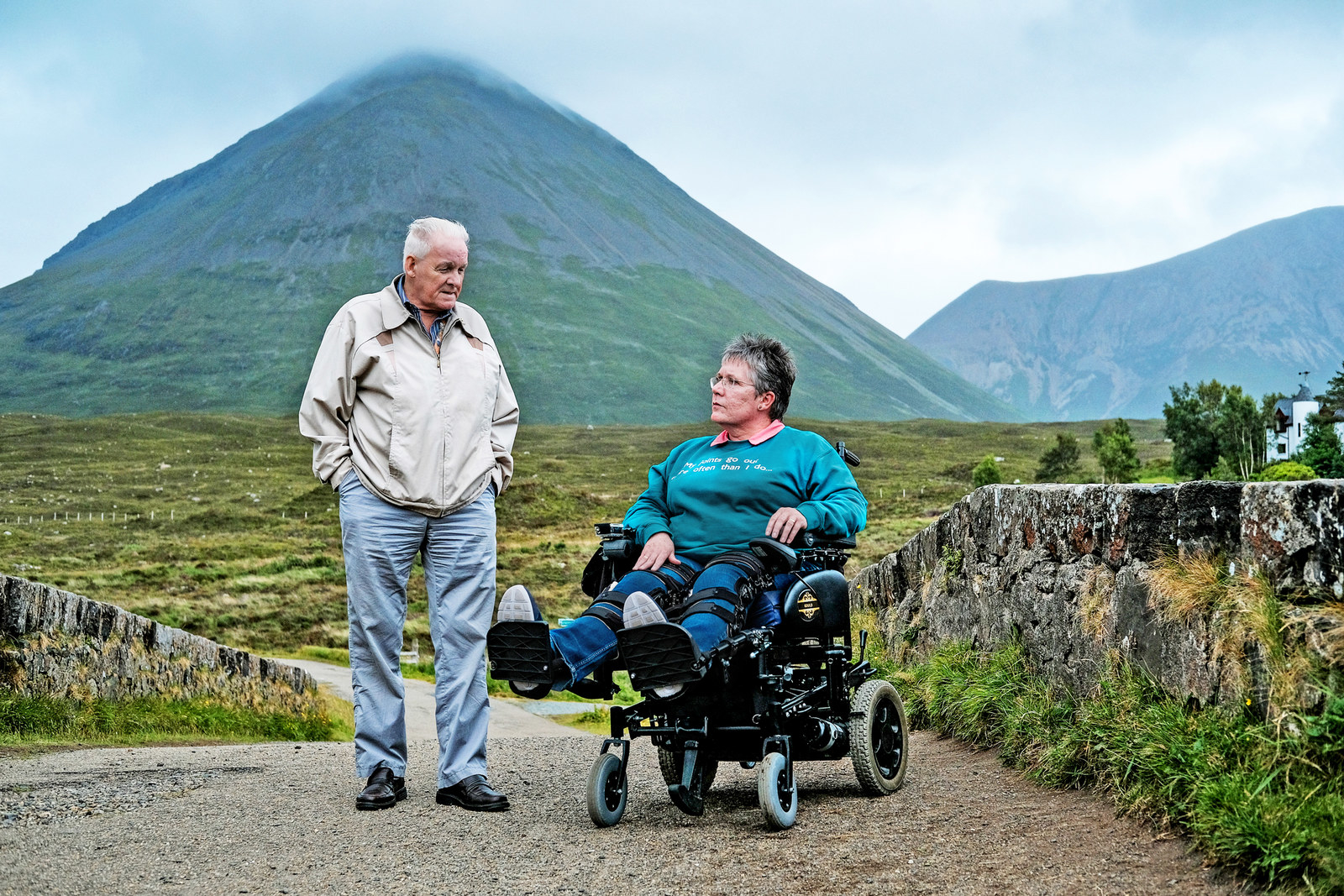
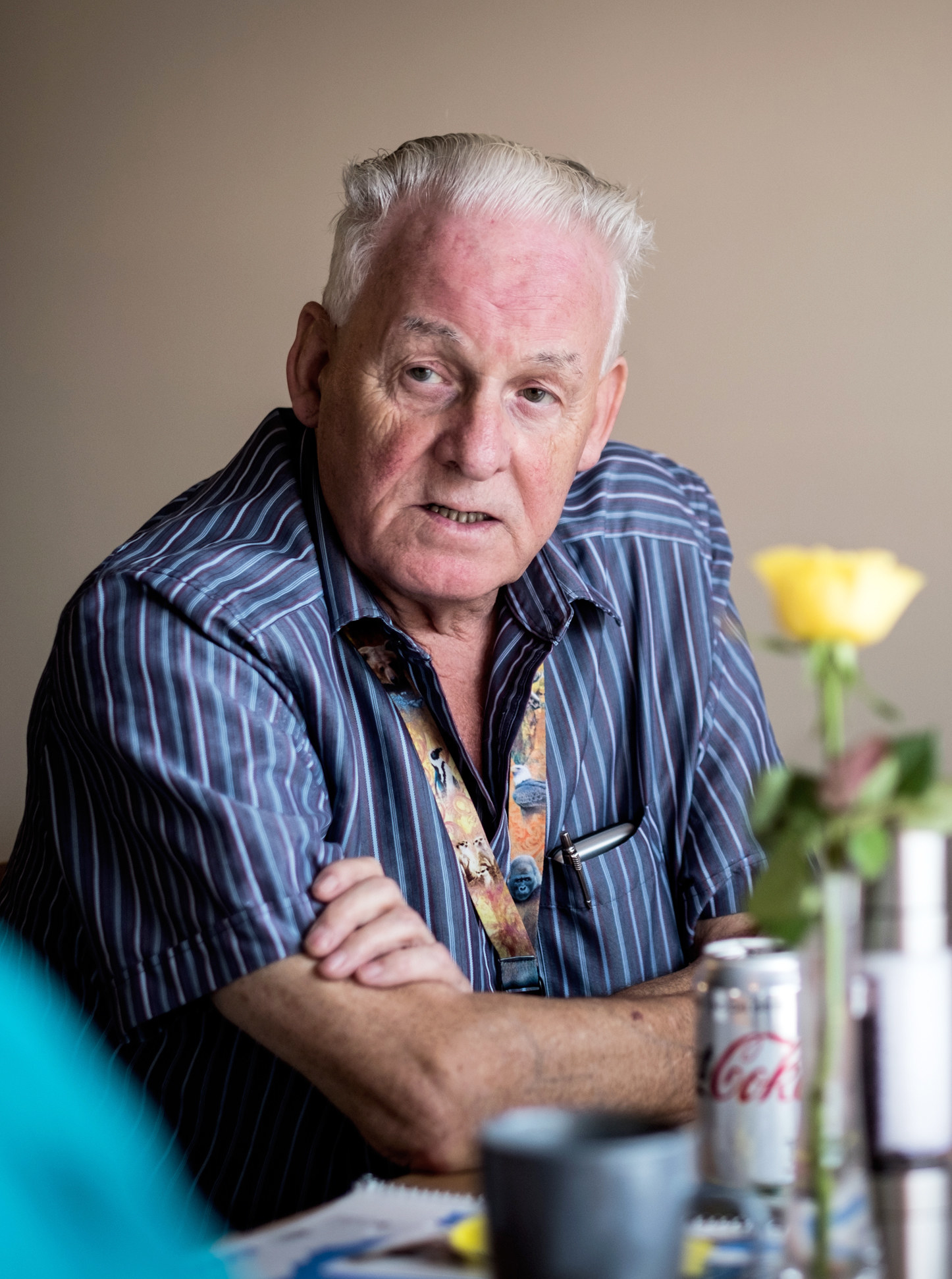
Greer has chronic obstructive pulmonary disorder (COPD), the name given to a group of lung conditions that get progressively worse over time. “The COPD dates back to my time in the fire brigade,” Greer continues. “When I first started there we didn’t wear breathing apparatus – it sounds daft these days, but back then you wouldn’t even consider it. All my life I’ve just wanted to help other people. When I worked in the centre for the elderly I was a caretaker, a bus driver, I even fixed their glasses for them. My work for the access panel helps me feel useful again, in a different way.”
After visiting a business, auditors like Gould and the other members of the panel produce a report with recommendations for improving disability access, but company owners aren’t legally obligated to follow them, and building plans can still be passed by the regulator even if the recommendations aren’t implemented.
Gould explains: “As an access auditor you’re trying to uphold disabled people’s rights and encourage businesses to make reasonable adjustments, but we can’t force them to. The only course of action for a disabled person who has been denied access is to take legal action against the service provider, which is difficult to do if – like many registered disabled people – you’re not working full-time, especially due to the recent cuts to legal aid. Also, there are very few specialist disability lawyers in Scotland, and even fewer who will operate on a pro bono basis.”
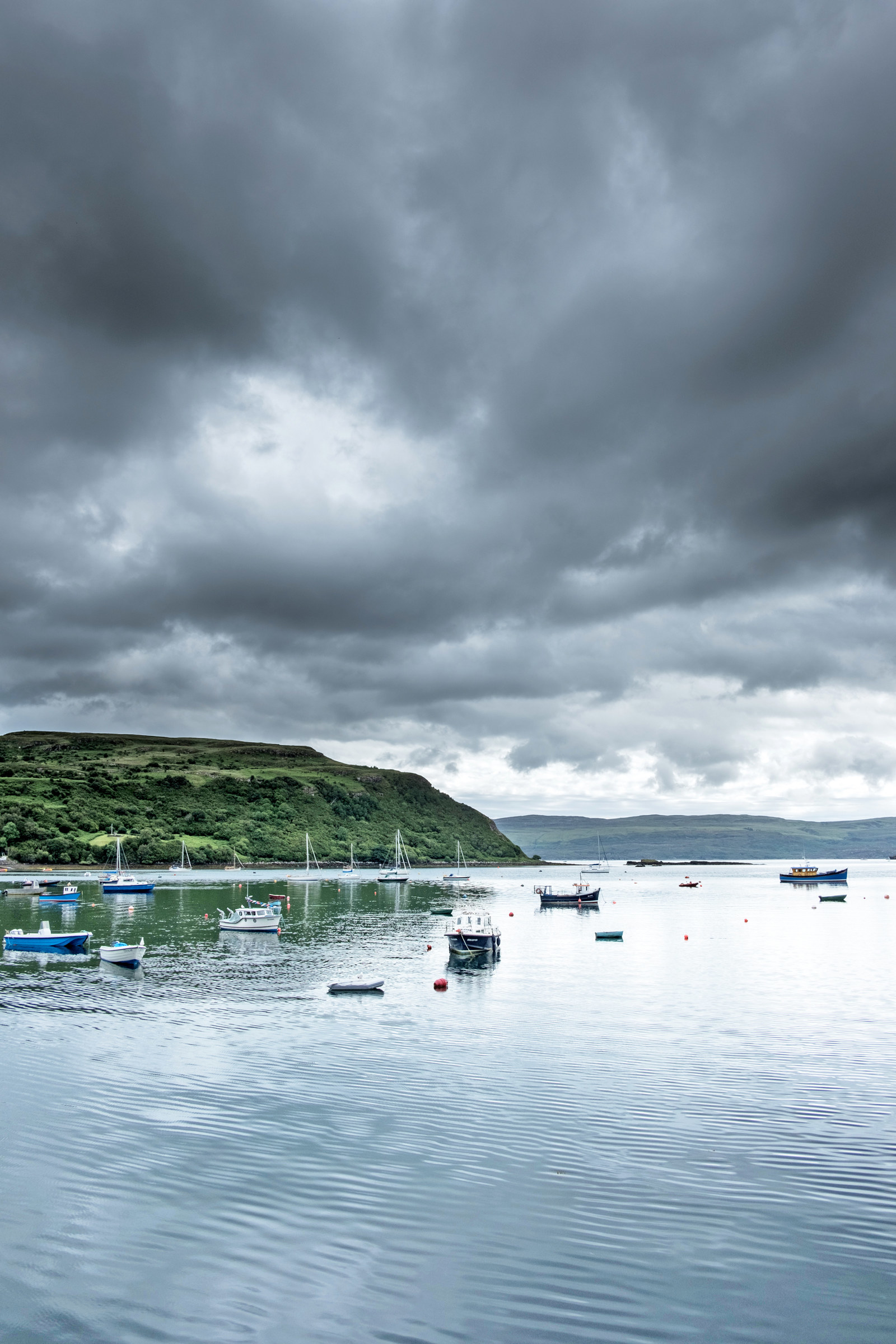
She goes on to explain that, on Skye, tourists from more accessible countries like Sweden can be unforgiving when they find that amenities haven’t been put in place for them.
“We locals put up with a lot, but often tourists come with expectations and so are more likely to complain, especially when they’re coming from areas or countries where everything is in place for them. They come here and find so much is inaccessible and get frustrated. Lots of shops aren’t accessible enough for people to browse in, which feels like a missed opportunity.” A recent study by the Scottish Government revealed that the ‘purple pound’ [money spent by disabled people] could be worth as much as £16 billion a year to the Scottish economy. But they can’t spend money if they can’t access tourist attractions, buildings, or popular locations. And neither can locals.
Gould says ferries – a vital form of transport for both tourists and locals living in island communities – often have accessibility issues. MSPs from northern Scottish constituencies agree, and have been pushing for better disabled access to ferries and boat tours in the Highlands and Islands, with Labour’s Rhoda Grant telling the Strathspey and Badenoch Herald: “Regardless of whether we are able-bodied, if a lift at a ferry terminal is not working, if there are limitations to bus travel or if taxi travel proves to be challenging, it affects us all, although the effects are compounded for those with disabilities.”
According to Grant, the popular disabled access review site Euan’s Guide has relatively few entries for the Scottish Highlands and Islands, which makes it harder for visitors to plan a trip. Gould has personally experienced more than her fair share of these types of barriers, restrictions, denials of service, and problems accessing public services.

“It can be tricky here, but I think my worst experiences haven’t been on Skye at all, it’s been when I’ve travelled to Glasgow or even London,” she explains. "You could have the most wonderfully accessible building, but all it takes is one or two untrained members of staff and it all goes wrong. I went to a hospital in Glasgow recently. I was absolutely desperate to use the toilet but they said ‘You’ll have to wait until you go down for your scan because we don’t have an accessible toilet on this level.’ I got down and immediately asked to use it. The nurses looked at me guiltily. It took them 20 minutes to get all the files and shelves out of the toilet. They were using it as a storage room.
“Then there are hotels. It took me ages to find an accessible room in central London once that was close enough to the hospital. Before I arrived they called me and said, ‘Just to let you know, we’re in the middle of refurbishing the lift, and just wanted to make sure you were OK carrying your wheelchair up two flights of stairs?’ I said, ‘Only if you can work miracles!’ But what really worries me is when I’m in places where they clearly haven’t done any disability training. If they don’t say ‘Is there anything in the event of the emergency I can assist you with?’ when I check in, which is what they’re supposed to do, then I assume they don’t have a plan to get me out of this building. And even if I get out without my chair, it can take eight months to a year to get another one. What am I supposed to do in the meantime? I don’t want to leave my ‘legs’ behind.”
She pauses. “It’s all quite difficult to deal with, but I operate on the basis that I’m the person I was meant to be, I want to live life to the full, and I try not to let anything stop me. But it is frustrating when you just want to do things like anybody else and you’re prevented by barriers that would be easy to remove: banks putting unnecessary steps in their lobbies so that I have to do my transactions in the street; public buildings putting disabled entrances at the end of long, uncomfortable gravel paths, or forcing disabled people to make detours along dangerous, fast roads. The sooner people open their eyes to these things the better. They’d realise that it’s not necessarily going to cost them a lot of money to make those changes, but for the disabled person it’s invaluable.”
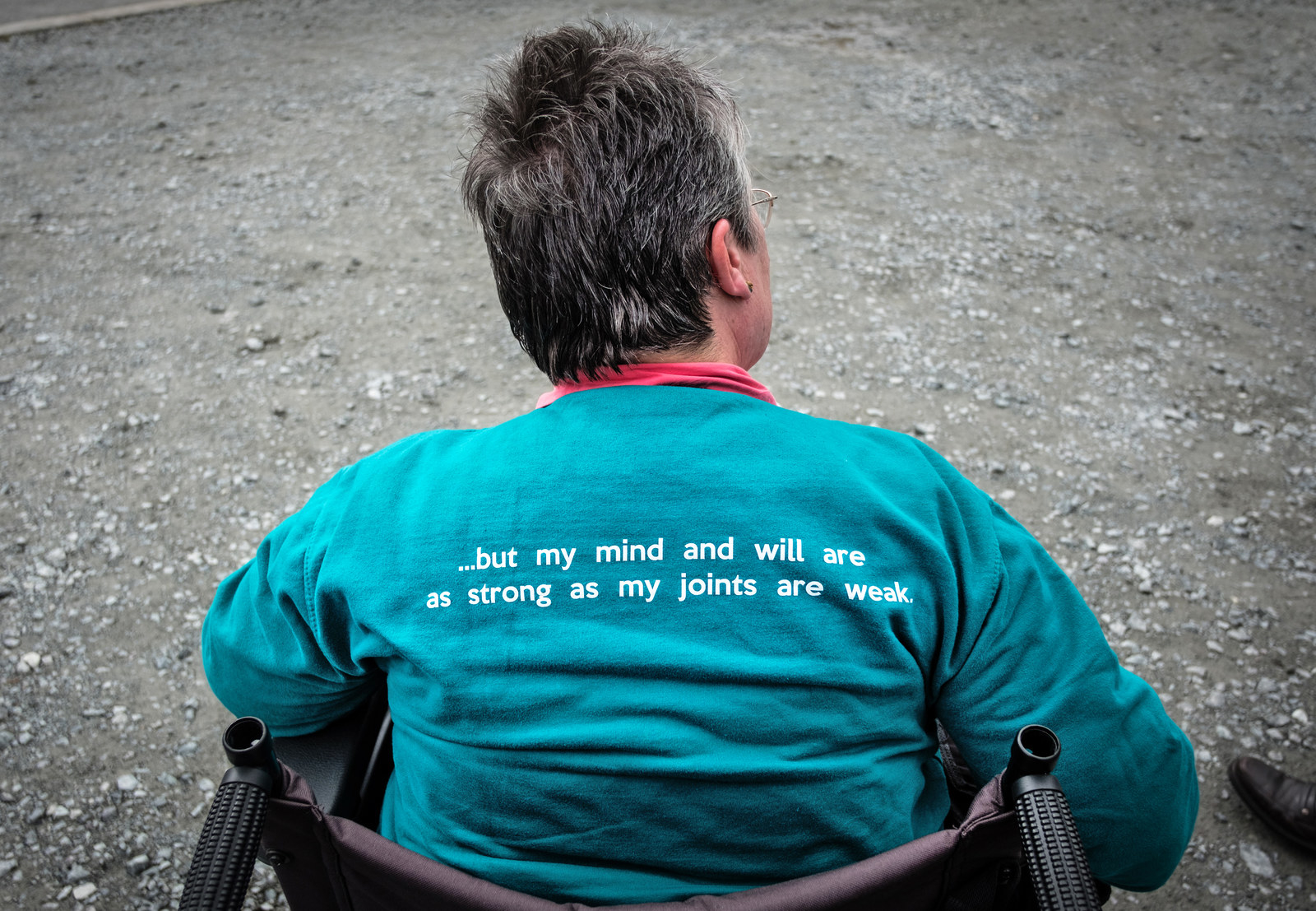
She becomes tearful as she continues. “Little things like ensuring suitable ramps are in place, or installing a switch at wheelchair height that people can use to call for attention, help you feel normal again. They make you feel that you actually matter, that people want you. That’s what it’s like. And it’s not easy sometimes feeling totally rejected.
“It is getting better here on Skye, though. We made some recommendations to Talisker Distillery, which is a very popular tourist attraction. They had a lift shaft built so that they could install a lift to get people to the first floor of the distillery. They’ve also made videos of any inaccessible parts of their guided tours, which disabled people can watch before going back to rejoin the main group. When we told them that a disabled person with a vision impairment wouldn’t be able to navigate their new disabled toilet because it was all painted in the same shade of magnolia, they added contrasting colours to make the various features easier to see. That’s always gratifying.”
She adds: “Transport has improved as well. We have accessible buses now – they arrived on the island two years ago. Before that disabled people often had to rely on neighbours giving them a lift. It wasn’t ideal, but you do feel you’re part of a community that cares. Everyone helps everyone else, whether they’re disabled or not. It really knits the community together. It’s a lovely way of living. It might be frustrating at times, but it’s not something I would ever want to leave.”
Greer nods in agreement: “It’s such a caring community. People tend to know their neighbours and you can call on them for help if you need anything. Obviously you don’t want to burden people by asking them to, say, get your shopping for you, but for example our local postman is happy to pick up repeat prescriptions or other items from the chemist and bring them to people who can’t get out. It’s wonderful really.”
“Then there’s Skye and Lochalsh Disabled Ramblers as well,” says Gould. “We have three off-road scooters; visitors can join and take them out too. Living in a mountainous area doesn’t mean it’s inaccessible. The Highland Council rangers do path audits and carry out work on mountain paths to make them more accessible and scooter-friendly. This scenery draws so many people here, so it’s only right that all people should be able to enjoy it, regardless of their level of disability.”
She gestures at the surrounding landscape – the wide open skies, rolling hills, and the tall, pointed range of mountains behind them, which glisten like jagged teeth in the rain.
“Yes, it’s hard here at times,” says Gould. “But I love it! I met the man I love here. And look around you: It’s one of the most beautiful places in the world to live in. Yes, it’s raining and misty right now, but at the end of the day it’s just water, it dries. And when it does, you see it’s still beautiful. Nothing can change that.”
